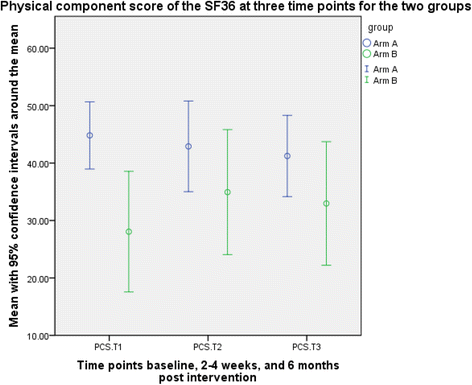A pilot randomised controlled trial investigating a mindfulness-based stress reduction (MBSR) intervention in individuals with pulmonary arterial hypertension (PAH): the PATHWAYS study
- PMID: 29796292
- PMCID: PMC5961480
- DOI: 10.1186/s40814-018-0270-z
A pilot randomised controlled trial investigating a mindfulness-based stress reduction (MBSR) intervention in individuals with pulmonary arterial hypertension (PAH): the PATHWAYS study
Abstract
Background: Pulmonary arterial hypertension (PAH) is an uncommon condition with progressive heart failure and premature death. Treatment costs up to £120,000 per patient per year, and the psychological burden of PAH is substantial. Mindfulness-based stress reduction (MBSR) is an intervention with the potential to reduce this burden, but to date, it has not been applied to people with pulmonary hypertension. We wished to determine whether a trial of MBSR for people with PAH would be feasible.
Methods: A customised gentle MBSR programme of eight sessions was developed for people with physical disability due to PAH, and they were randomised to group-based MBSR or treatment as usual. The completeness of outcome measures including Beck Anxiety Index, Beck Depression Inventory and standard physical assessment at 3 months after randomisation were recorded. Health care utilisation was measured. Attendance at the sessions and the costs involved in delivering the intervention were assessed. Semi-structured interviews were conducted to explore the acceptability of the MBSR intervention and when appropriate the reasons for trial non-participation.
Results: Fifty-two patients were recruited, but only 34 were randomised due to patients finding it difficult to travel to sessions. Twenty-two completed all questionnaires and attended all clinics, both routine and additional in order to collect outcomes measures. The MSBR sessions were delivered in Bristol, Cardiff and London, costing, on average, between £2234 (Cardiff) and £4128 (London) per patient to deliver. Attendance at each session averaged between two patients in Bristol and Cardiff and three in London. For those receiving treatment as usual, clinician blinding was achievable. Interviews revealed that people who attended MBSR found it interesting and helpful in managing their symptoms and minimising the psychological component of their disease.
Conclusions: We found that attendance at group MBSR was poor in people with chronic PAH within the context of a trial. Achieving better MBSR intervention attendance or use of an Internet-based programme might maximise the benefit of MBSR.
Keywords: Economic evaluation; Mindfulness-based stress reduction; Psychology; Pulmonary arterial hypertension.
Conflict of interest statement
The study was performed with NHS sponsorship and Research Ethics Committee (REC) approval 12/SW/0264 with fully informed consent of the patients taking part. It was conducted in accordance with the Research Governance Framework for Health and Social Care and Good Clinical Practice. An independent steering committee provided feasibility for trial oversight. NIHR has approved the submission of this document.The authors declare that they have no competing interests.Springer Nature remains neutral with regard to jurisdictional claims in published maps and institutional affiliations.
Figures



References
-
- Galie N, Humbert M, Vachiery JL, Gibbs S, Lang I, Torbicki A, et al. 2015 ESC/ERS guidelines for the diagnosis and treatment of pulmonary hypertension: the Joint Task Force For The Diagnosis And Treatment Of Pulmonary Hypertension Of The European Society Of Cardiology (ESC) and the European Respiratory Society (ERS): endorsed by: Association For European Paediatric And Congenital Cardiology (AEPC), International Society For Heart And Lung Transplantation (ISHLT). Eur Respir J. 2015;46(4):903-75. - PubMed
-
- Bradford R, Tulloh R. Diagnosis and management of pulmonary hypertension in adult congenital heart disease. Br J Card Nurs. 2008;3:138–145. doi: 10.12968/bjca.2008.3.4.28916. - DOI
-
- Mckenna SP, Doughty N, Meads DM, Doward LC, Pepke-Zaba J. The Cambridge Pulmonary Hypertension Outcome Review (CAMPHOR): a measure of health-related quality of life and quality of life for patients with pulmonary hypertension. Qual Life Res. 2006;15(1):103–115. doi: 10.1007/s11136-005-3513-4. - DOI - PubMed
LinkOut - more resources
Full Text Sources
Other Literature Sources

